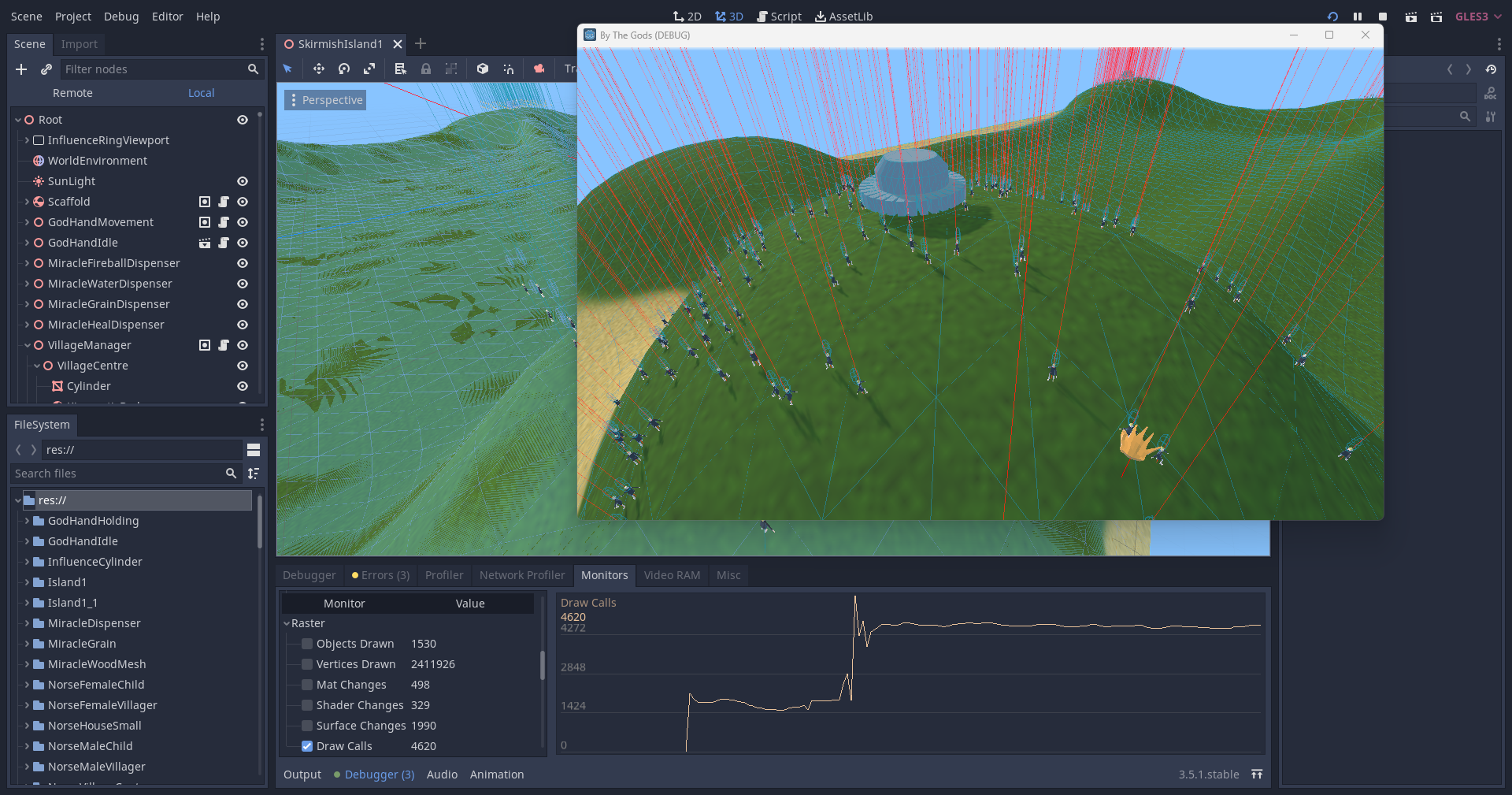- Edited
This is a stress test of a project I've been working on for a good few years now, thanks a bunch to the Godot community, you guys answering my questions about navmesh and rotation/vector maths has been particularly helpful. I've been converting everything over from Unity to Godot and I'm now almost at the point where I can start really showing off the mechanics but easily the most fascinating thing so far has been doing the stress tests. I have been really impressed with Godot's performance so far but of course I'll need to do more setting up with my other mechanics and start having proper playtesting sessions  Unity was something that would struggle a lot with their equivalent of 3D labels/sprites and it would lag like crazy for some reason so I had to write code to adjust for that. Hopefully I'm not getting excited too soon but it seems that I may not have to worry too much about that in Godot but I will give people the option of hiding my 3D villager statuses so it doesn't get in the way if people don't want to see it.
Unity was something that would struggle a lot with their equivalent of 3D labels/sprites and it would lag like crazy for some reason so I had to write code to adjust for that. Hopefully I'm not getting excited too soon but it seems that I may not have to worry too much about that in Godot but I will give people the option of hiding my 3D villager statuses so it doesn't get in the way if people don't want to see it.
If you guys have specific questions about what I'm up to feel free to ask, I'm going to also be looking at doing a proper write up for how to set all of this up because boy is Godot a fussy creature when it comes to navmesh baking and agents.
The main premise of the game is you are simply a God and you use your hand to interact with everything within the game world within your influence, expand villages by building houses and your influence will expand as well. You then capture other villages by impressing the villagers in them doing good/evil actions.

 I've seen the profiler which looks interesting and helpful but that's about it.
I've seen the profiler which looks interesting and helpful but that's about it.